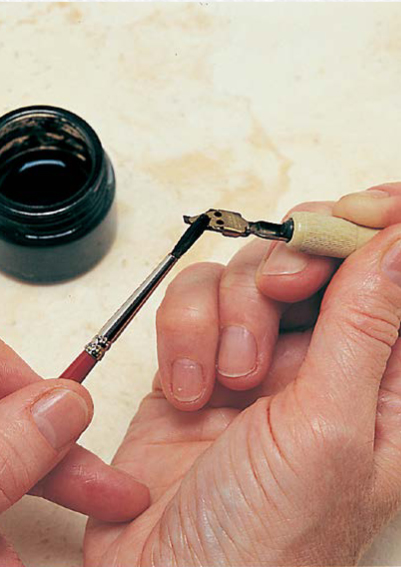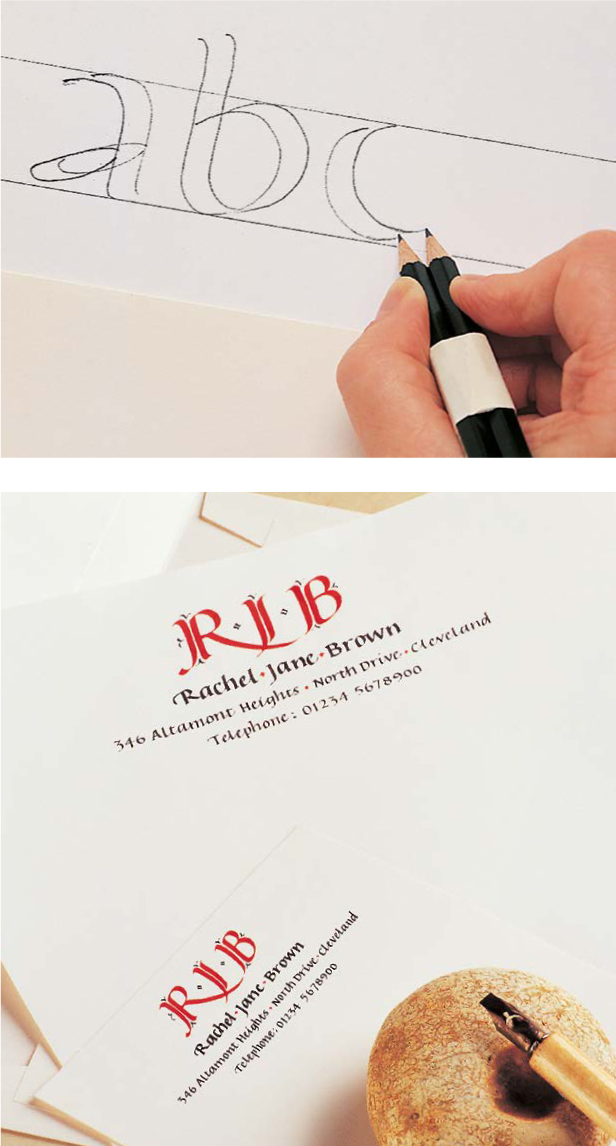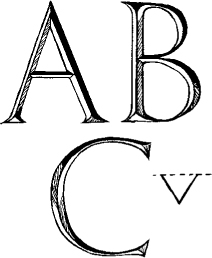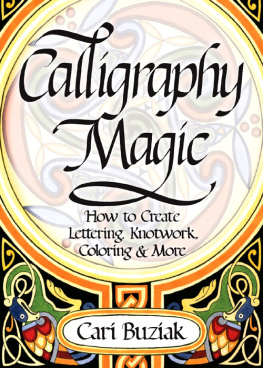Contents
Guide

Published 2001, 2020IMM Lifestyle Books, an imprint of Fox Chapel Publishing
IMM Lifestyle Books are distributed in the UK by Grantham Book Service, Trent Road, Grantham, Lincolnshire, NG31 7XQ.
In North America, IMM Lifestyle Books are distributed by Fox Chapel Publishing, 903 Square Street, Mount Joy, PA 17552, www.FoxChapelPublishing.com.
2001, 2020 by Margaret Morgan and Fox Chapel Publishing Company, Inc.
The projects, templates, and exemplar alphabets contained herein are copyrighted by the author. Readers may make copies of these items for personal use. The items themselves, however, are not to be duplicated for resale or distribution under any circumstances. Any such copying is a violation of copyright law.
All illustrations and lettering by the author. All photography by John Freeman unless otherwise noted. Photos by the author: pages by Anna K Mueller.
Print 978-1-5048-0113-3
eISBN 978-1-6076-5724-8
Library of Congress Control Number: 2019947162
We are always looking for talented authors. To submit an idea, please send a brief inquiry to .
This book has been published with the intent to provide accurate and authoritative information in regard to the subject matter within. While every precaution has been taken in the preparation of this book, the author and publisher expressly disclaim any responsibility for any errors, omissions, or adverse effects arising from the use or application of the information contained herein.
About the Author
Margaret Morgan is a freelance calligrapher with over 30 years experience. She has taught workshops both at home and abroad since 2001, including in Germany, Norway, Japan, and the United States. Originally trained in graphic design and typography, she worked in a variety of fields, including advertising, display, and packaging, before turning her attention to calligraphy full time. Her work is in both private and public collections, notably the Internatioxnal Calligraphy Archive in Berlin, Germany. She is a Fellow of the Calligraphy & Lettering Arts Society and a full member of Letter Exchange in the UK.
Acknowledgments
Grateful thanks to the following for providing the materials for photography: Daler Rowney Ltd, Winsor & Newton, L Cornelissen & Son Ltd, Falkiner Fine Papers, Cowling & Wilcox. Thanks also to friends and calligraphic colleagues who have guided and encouraged me over the years, especially my patient and understanding husband.
Contents




Introduction
Lettering is fun! This book is aimed at beginners as well as those with some experience of wielding a broad-edged pen. It gives you the information and examples needed to help you write several different scripts well, and then goes on to introduce the use of design in simple calligraphic projects. Once you have mastered the basic skills of good letterforms, there are many exciting techniques to explore, both traditional and modern, within these pages.
Since the widespread use of computers and handheld devices have taken over so much of our written communications, it does no harm at all to reexamine the historical origins of the letters we see and use every day. Look carefully at how those familiar 26 letters are made, following four specific traditional styles, then take courage and go forward with experiments of your own. Open your eyes to other cultures too; other, less familiar influences, with their different ways of using color and design than your own, can open up new horizons and spark off ideas to explore.
My involvement with calligraphy started early. Learning italic handwriting at the age of eight and a Christmas gift of a set of broad-edged Mitchell nibs are what got me hooked. I studied graphic design and typography at art college (letters again!), which formed the major part of my professional work for more than twenty years. However, those edged pens were never far from my hand, and calligraphic work eventually took over my time completely towards the end of the 1990s, which gives me great satisfaction. That art training, backed up by continuing regular study with well-regarded international lettering artists, has been invaluable for extending the creative possibilities for the many gifts and cards using letters that I have made over the years.
Calligraphy: A Guide to Classic Lettering gives you a glimpse of what is possible with pen, paper, inks, and paints, with a little time, patience, and enthusiasm. You may find, as I have, that your interest goes beyond the hobby stage and will stay with you forever.
Margaret Morgan

A Brief History of Western Calligraphy
The history of calligraphy, like many other histories, is cyclical: a new writing style is born, developed, and eventually dies or goes out of fashion; this is followed by rediscovery, reappraisal, and further improvement. What follows is just a general outline of how our current letterforms came into being.
roman capitals
Our familiar Western letterforms mostly stem from the Roman capitals (or majuscules) of the early centuries AD. These capitals were used for important and formal inscriptions. It is generally believed that the letters were first painted with a square-edged brush, then cut into a V-section in stone. The pattern of thick and thin strokes shows the calligraphic influence of the tools used to make them and the angle at which the tools were held. They werent everyday letterforms, though, as they required care and precision in the making. Square and rustic capitals fall into the same category. These early book hands were used for writing out classical texts. They were slow to write and required much pen manipulation to achieve the shapesnot natural pen-written forms at all.
Scribes gradually modified the capitals to economize on effort for the sake of speed; they took notes with their metal styli onto wax tablets, and, gradually, a cursive or running hand evolved. These tablets could be smoothed over and reused after the text had been transferred to a more permanent form, such as with reeds or quills on papyrus.

ROMAN CAPITALS

RUSTIC CAPITALS
















